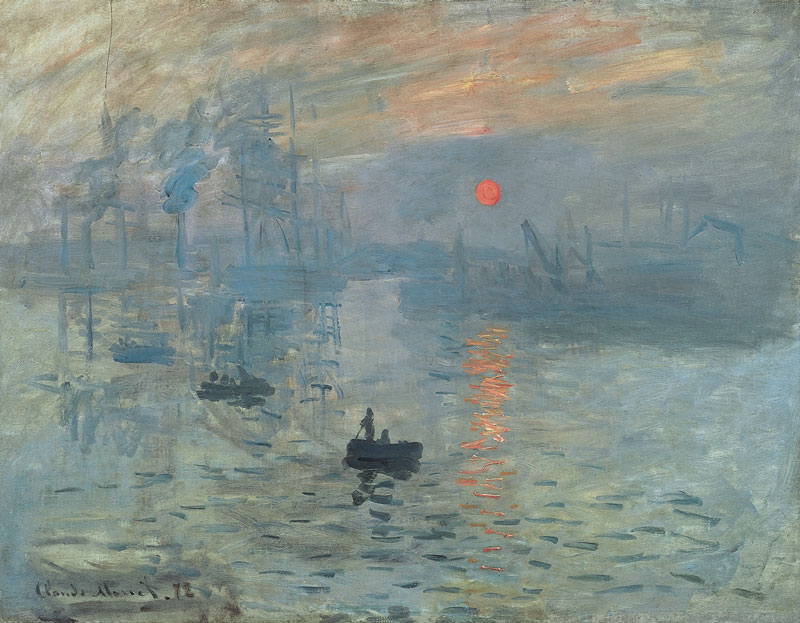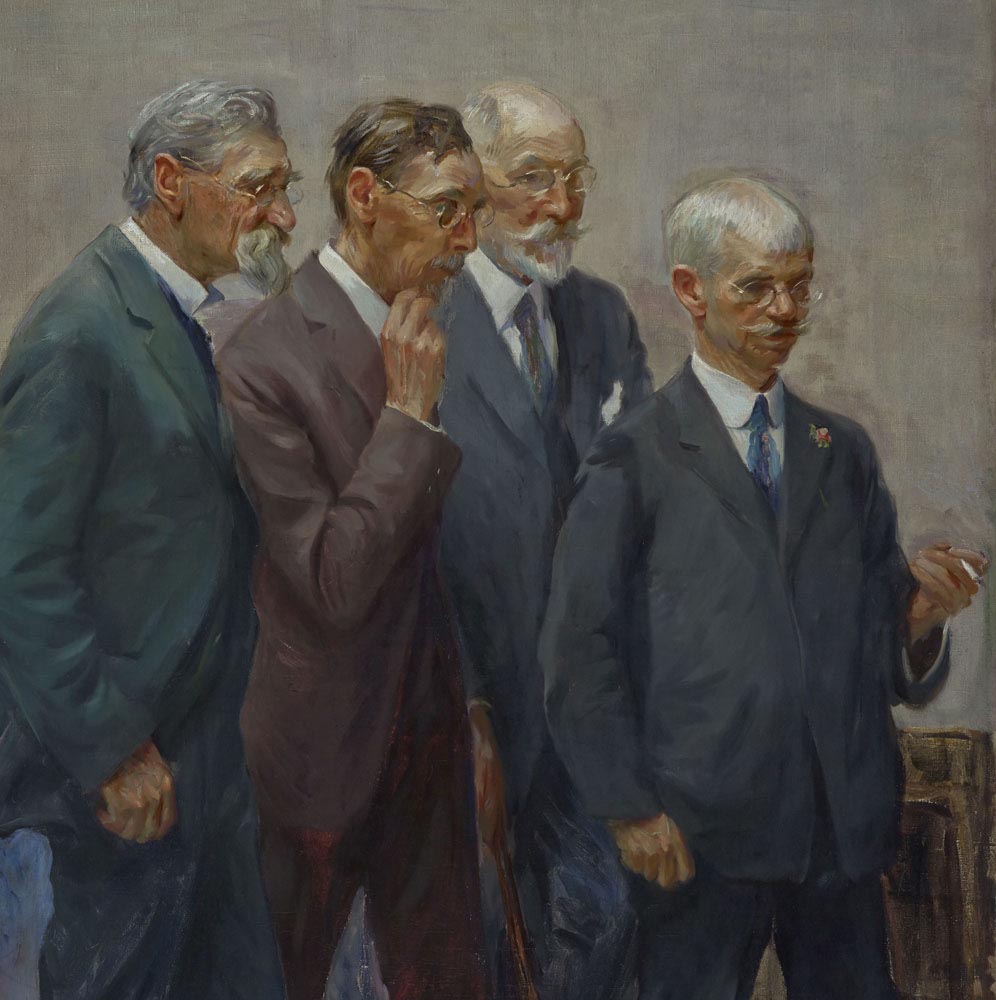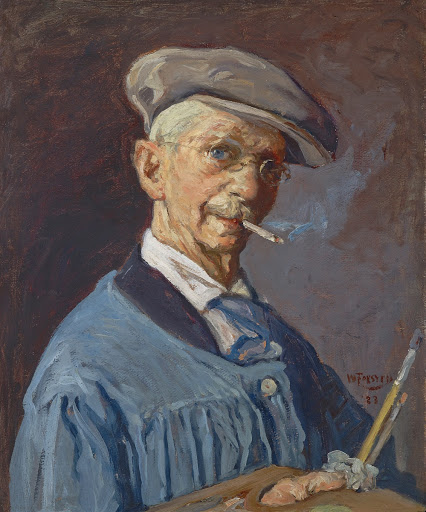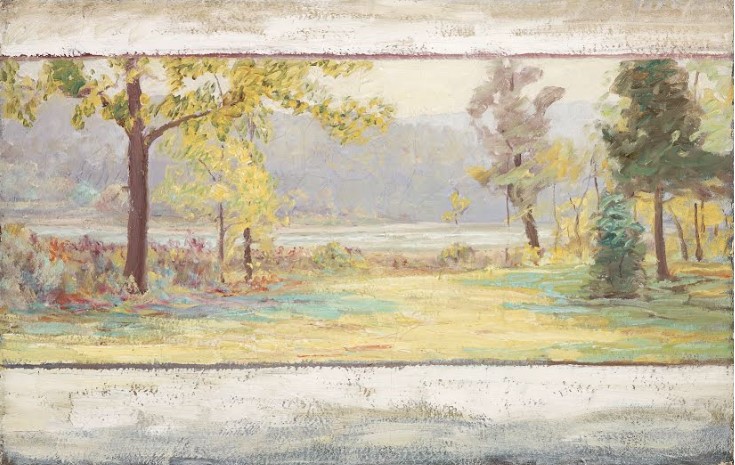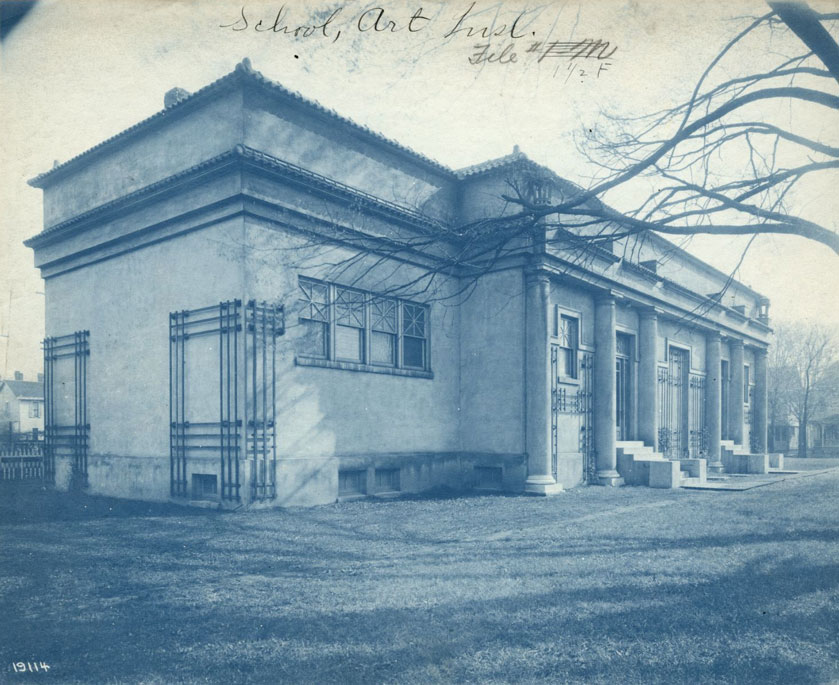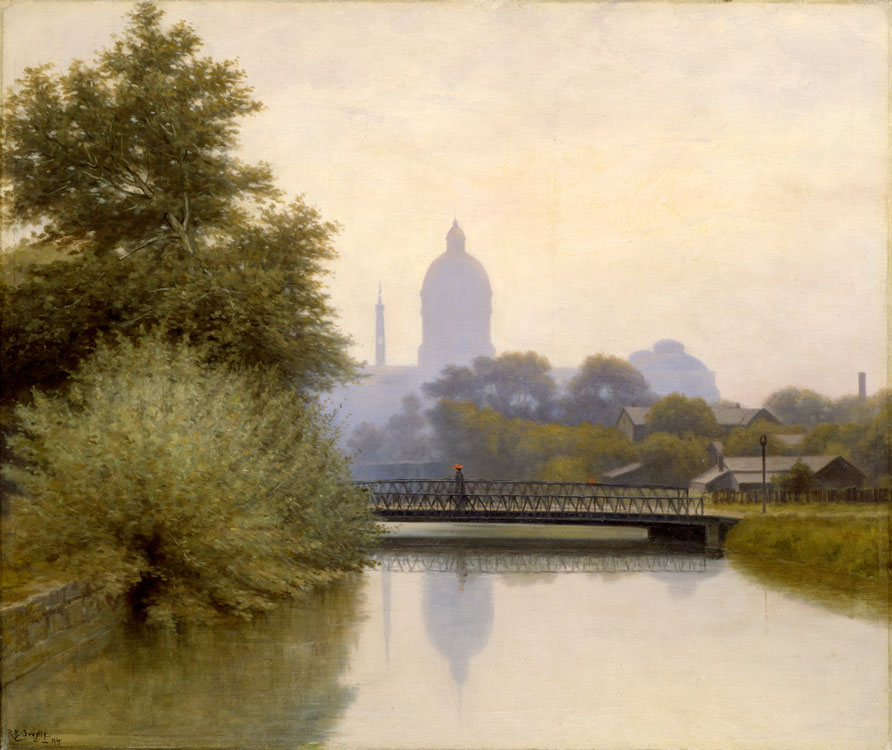T. C. Steele
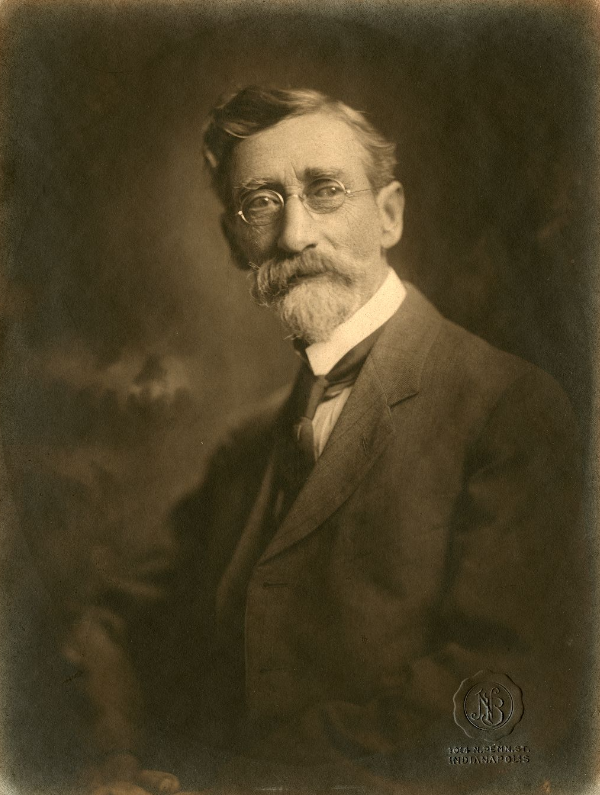
Courtesy of Indiana Historical Society
The oldest of the Hoosier Group members, Theodore Clement Steele found his calling in the arts at a young age. He attended Waveland Collegiate Institute from 1859 to 1868. As a second-year student, he began teaching drawing and painting classes to younger students.
After graduating from Waveland, Steele fulfilled portrait commissions while continuing his art education by taking trips to Chicago galleries. Steele, who had befriended Mary Elizabeth (Libbie) Lakin at Waveland Academy, married her on Valentine’s Day in 1870. The couple moved to Battle Creek, Michigan. Steele continued painting portraits, while also teaching art classes.
The family moved back to Indianapolis late in 1873, and Steele set up a studio. The U.S. economy was in crisis, and he needed to take on extra work to support his family. He began a partnership with Indianapolis poet James Whitcomb Riley to paint business signs around the city.
He spent the next few years not only painting but also becoming active in the Indianapolis art scene. Seeing Steele’s potential, Indianapolis businessman and art patron Herman Lieber convinced 13 of Steele’s supporters to pledge $100 each to Steele so that he could study in Europe. In July 1880, the whole Steele family set sail for Germany.
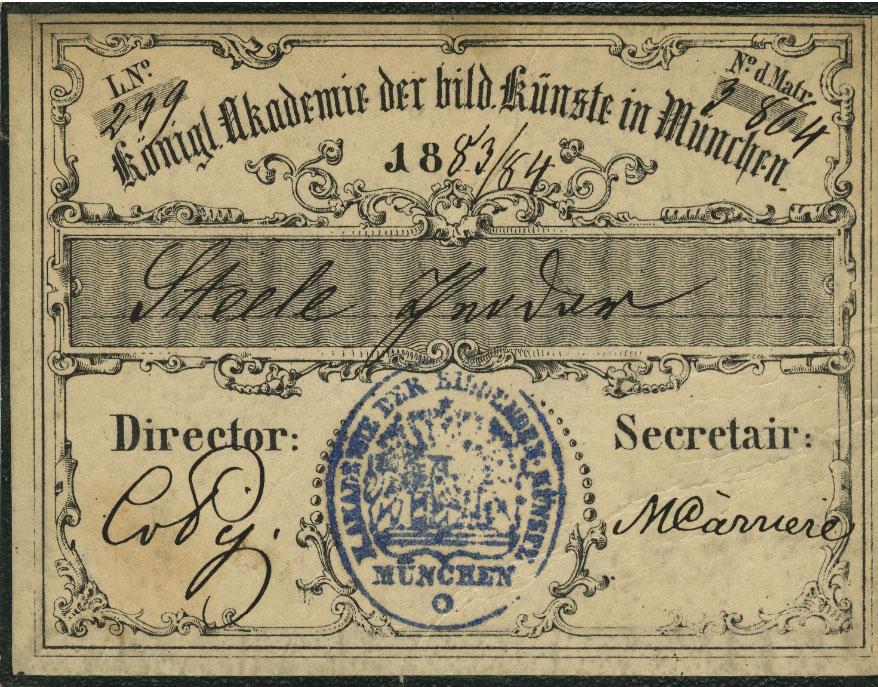
Courtesy of Indiana Historical Society
On October 16, 1880, Steele enrolled at the Royal Academy in Munich. He learned to be a better portrait painter through his academic work, but he also found new inspiration by painting with American ex-patriot J. Frank Currier, who produced experimental and expressive landscapes outside of the academy. This is where Steele developed his passion for painting landscapes on location or en plein air.
Steele and his family returned to Indianapolis in June 1885. The family settled at Tinker Place, a house located between Pennsylvania Street and Talbot Avenue, the location today of Herron High School. Steele built a studio on the property to be able to work close to home. His reputation as the premier portrait painter in Indianapolis became firmly established. In 1889, Steele also opened the Indiana School of Art at Circle Hall on Monument Circle.
In addition to his portrait work and teaching, Steele made time during the late 1880s and 1890s to explore the state of Indiana pursuing his true passion—painting landscapes. In 1894, he exhibited some of this work with Adams, Forsyth, Stark, and Gruelle in an exhibition in Chicago that would label him and four other artists as the Hoosier Group.
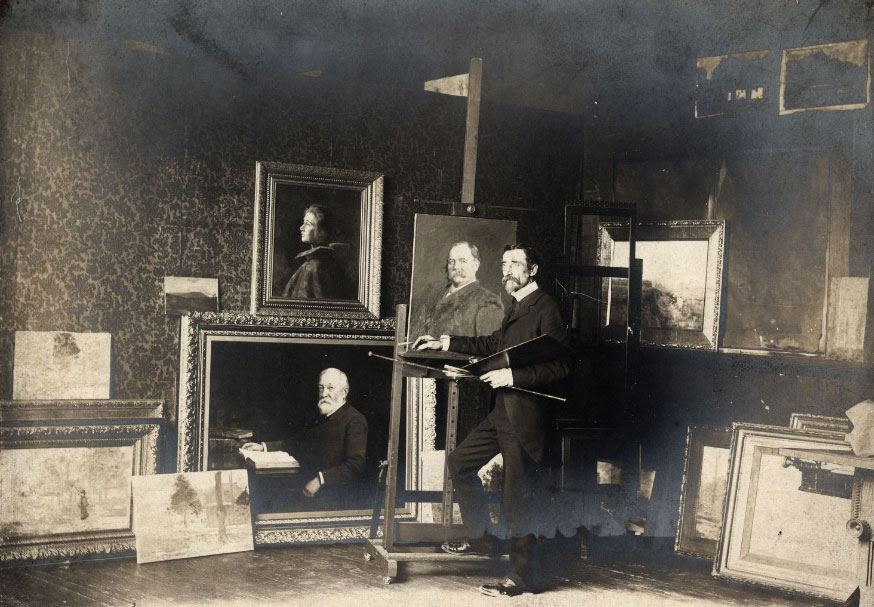
Courtesy of Indiana Historical Society
While Steele stayed in the city during the winter, painting urban landscapes, exhibiting his work, and giving gallery talks and lectures, he spent the summer and autumn months exploring Indiana’s countryside, sometimes painting with fellow Hoosier Group members. Steele even bought a summer house, the Hermitage, with J. Ottis Adams in Brookville in February 1898.
Tragedy struck the Steele family in 1899 when Mary Elizabeth passed away. In addition to being Steele’s adored wife, she also served as his muse and critic, helping guide and shape his artistic direction: “I owe everything to your mother,” he wrote to his eldest son. “It is she who made a landscape painter of me instead of a portrait painter…. Your mother taught me first to see with her eyes and then through my own.”
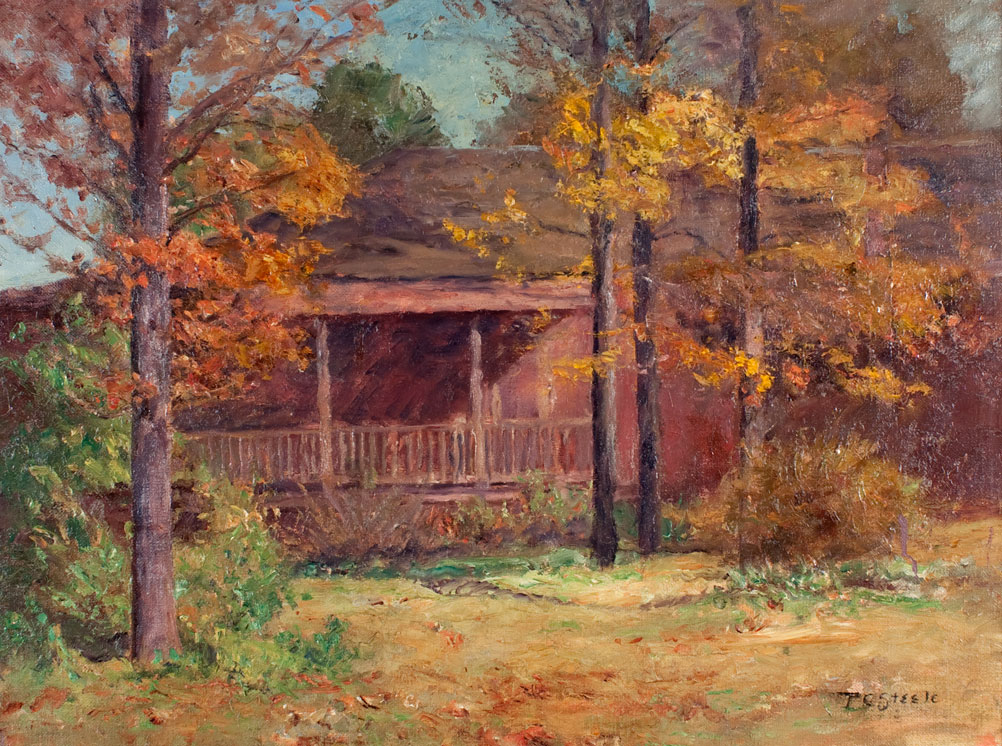
Steele’s House of the Singing Winds is the dominant subject of this scene of his home in Brown County.
From the collection of the Indiana State Museum and Historic Sites
With the lease on “Tinker Place” ending in 1901 and the matriarch of the family gone, Steele moved with his three grown children to a smaller house on East St. Clair Street. He spent the next three summers on the West Coast visiting family members. Here, he captured the scenery that was strikingly different than that of Indiana on canvas.
In 1907, Steele married Selma Neubacher, who was the assistant supervisor of art for Indianapolis Public Schools as well as a member of the Indianapolis Sketching Club. Ready to explore a new area of Indiana with his new wife, Steele sold his interest in the Hermitage to Adams and purchased land in Brown County. He built a home and studio there, naming it the House of Singing Winds.
Being close to Bloomington, Steele began working for Indiana University. The school awarded him an honorary degree in 1916 and hired him as an artist in residence with a studio on campus in 1922.

Courtesty of Indiana Historical Society
–Judith Vale Newton, author of Five Hoosier Painters



